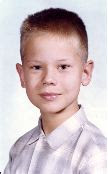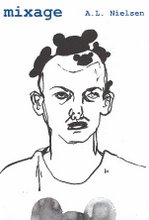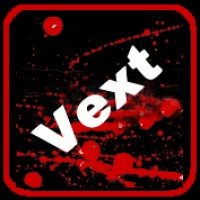FIRST LOVE
Q. What was the first book by an African American writer that had a lasting influence on you? Why?
That one is difficult to place, something like being asked to name a favorite poet, but for different reasons. Which could have been first? I remember in grade school reading aboutGeorge Washington Carver (there was that early fascination with books about science). There’s no telling who had written that book, though, so I can’t say if it was an African American writer or not. I really can’t remember when I first read prose by an African American, though I know I knew quite a few names before we got to the subject in English classes. At twelve, though I had not yet read him, I saw James Baldwin on a program broadcast over what was then still called “educational T.V.” titled “The Negro and the American Promise.” This was, I believe, shortly before the move to D.C., shortly before the March on Washington. I’m not sure I’d known of Baldwin before, but I meant to read something by him soon.
I remember the first whole book we read by an African American author in high school was Manchild in the Promised Land by Claude Brown. I had been reading short fiction by Black writers and interviews and book reviews in the many magazines I absorbed. To this day I can still recall a review of Baraka’s Tales I saw quite a while before I found a copy of the actual book. It was because of reading newspapers and magazines that I already knew the name of Claude Brown before we came to his book in class. Other students at Wakefield weren’t reading Claude Brown. I was in a very special program that was available to us in eleventh and twelfth grades. My sister had gone through Wakefield two classes before me and alerted me to these possibilities, though she had not been in the programs herself. In eleventh grade I was in a special section of history and English in which the teachers collaborated. It was the history teacher, Juanita Chanel, who gave me the most encouragement and made presents to me at the end of the year of two important books: cummings’s “non-lectures,” but far more influential, William Carlos Williams’s late poems gathered in the New Directions paperback Pictures from Breughel and Other Poems. My senior year I was enrolled in “Art-English-Music Seminar.” The same group of students took all three subjects together and the teachers again collaborated. The main attraction was the many trips we took throughout the year to visit galleries, see films (which we then called “films,” not “movies” – we were so cool), attend plays and concerts. We’d each get a certain number of tickets for selected outings. All year long I’d go around to classmates and scoop up tickets when they had scheduling conflicts so that I could go to even more of these events. We went to the National Symphony. We went to Washington Theater Club and saw plays directed by Davey Marlin-Jones. We saw the Civil Rights era play My Sweet Charlie, in which a Black attorney from the North escaping from false murder accusations growing out of a demonstration takes refuge in an empty house, which just happens to be the same empty house in which a pregnant, bigoted white teenager is also hiding out. The play was presented as a made for TV movie (NOT a film) in 1970. We went to the then new Janus theater on Connecticut Avenue to see the wild film version of The Persecution and Assassination of Jean Paul Marat as Performed by the Inmates of the Asylum of Charenton Under the Direction of the Marquis de Sade. Always one to follow up on things, I read some books by the mad Marquis. The English teacher was horrified to hear I had done that bit of homework – Unintended outcomes –
But it was in that seminar that I had the first experience I can bring to memory of reading a Black book by assignment in a class. It did make an impression – enough that I kept looking for another book from Brown, which finally appeared during my undergraduate years at Federal City College.
But it’s no problem at all to name the first book by an African American author that had a lasting effect not just on my thinking but on my life and vocation. That was that first book of poetry purchased with my own cash that I have mentioned already, The Dead Lecturer by LeRoi Jones, first picked off the shelf on the strength of that cover photograph, but glued to my hands for the rest of my life because of those words:
Flesh, and cars, tar, dug holes beneath stone
a rude hierarchy of money, band saws cross out
music, feeling. Even speech corrodes.
I had known the name of Jones already, thanks to my wide reading, but I had not yet known that this was what he was doing.
It was the poetry itself that grabbed hold of me. Dylan was demonstrating that surrealist verse could be popular song. Jones was out there at the edges of syntax, showing what language could be made to do, what language had already done to us, what we could do in and with it. Before the Moderns, the poetry I’d read was largely interesting because of what it had to say, and perhaps its music. (I was still a ways from getting to know all of Whitman and the unadulterated Dickinson.) With Pound, Eliot (though I left that taste behind rather quickly) cummings, I found poetry that was doing something in and of itself.
There is an LP I left out of the answer to the question about music. An inveterate explorer of what used to be called the “cut out” bins, I one day found an album in a pile in a grocery store with the corner snipped off of the sleeve in the tell tale sign of a remaindered inventory being dumped. The album bore the title The Weary Blues and it was a collection of poetry read by Langston Hughes to a jazz accompaniment. I’d been eight years old when the recording sessions were completed, was thirteen the day I found the record there among the cereal boxes and frozen foods. The album credited the music to Leonard Feather. Mingus had been responsible for half of the tracks, but his name had been suppressed due to contractual difficulties. When the digital age arrived and the album was released on CD, the company that released it couldn’t be bothered to track the album; on the CD it’s all just one continuous track. “Curb your dog; don’t let your dog curb you,” recited the blues poet. You can still get the CD, and you can see a video of Hughes doing the same pieces with the Doug Parker band on a visit to Vancouver, a city with long ties to innovative American poetics, at this URL: https://www.youtube.com/watch?v=uM7HSOwJw20
So I had heard that, and read some Hughes. I had liked it, but The Dead Lecturer, though it had clear affinities to Hughes, was of a different order of innovation. Here was a poetry that was an event in itself, a poetry that was a performance already on the page, before it reached a stage or found a musical setting. This was poetry that was music, the music of thought, action painting in words.
The face sings, alone
at the top
Of the body. All
flesh, all song, aligned. For hell
is silent, at those cracked lips
I could see how this emerged from the Moderns, how it acknowledged them while setting itself apart. There was speech here, but something far more. It mattered, beyond anything cummings had thought of, how the page was scribed. It mattered that there were signs that could not be pronounced, pronouns announced. As Bop had been to Swing, this was to Hughes and his Weary Blues. This was a poetry aligned with what I was hearing on those albums by Trane, Shepp, Sun Ra, a poetry that was after the same things I was seeing in paintings reproduced in magazines by people like Kline and Johns and Pollack. (And increasingly, I was able to see such paintings live in the museums of D.C., most of which had free admission.)
This was a direct challenge to all that I thought I knew, to every way that I knew to know, and it was a challenge to my writing hand.
It is a polite truth
we are left with. Who are you? What are you
saying? Something to be dealt with, as easily.
The noxious game of reason . . .
Later I would read “How You Sound” and found it a pertinent question; I would hunt down “Hunting Is Not Those Heads on the Wall” and learn something of the importance of the making over the significance of artifact. Later still, I would see the cover of Black Magic in the same store where I had bought The Dead Lecturer. That cover, depicting a blonde haired, blue eyed, white voodoo doll stuck full of pins appeared to announce that the book was not intended for me. But guess what, the jacket copy revealed that the cover design was by Lawrence Ratzkin and the book design was by Quentin Fiore, famous, among other things, for his collaboration with Marshall McLuhan. Not to make too much of these facts, but suffice it to say that Black Nationalism was clearly a far more complicated thing than most were willing to credit. Jones, now become Baraka, did have a few things to say about White publishers and having to work with them, but I bought the book.
The only thing we know is the thing
we turn out to be, I don’t care what
you think, its true, now you think
your way out of this
Thing/think – true/you – Simple enough sounds organizing this quatrain, a quatrain that starts out in a mode of pentameter and then breaks for the something else that is free jazz. Poets since Keats have been telling us about what is all we know and all we need to know, but here was a form of lyric empiricism, wrapped in another challenge.
I had moved on from my ambition to be a forensic pathologist. In ninth grade I decided to become a computer scientist. By tenth grade I had refused to get with the program, was reprogramming my own software, and the poetry of LeRoi Jones/ Amiri Baraka gave me a new view of the syntax I was going to need on my journey.
I’m still thinking my way through this . . .





















